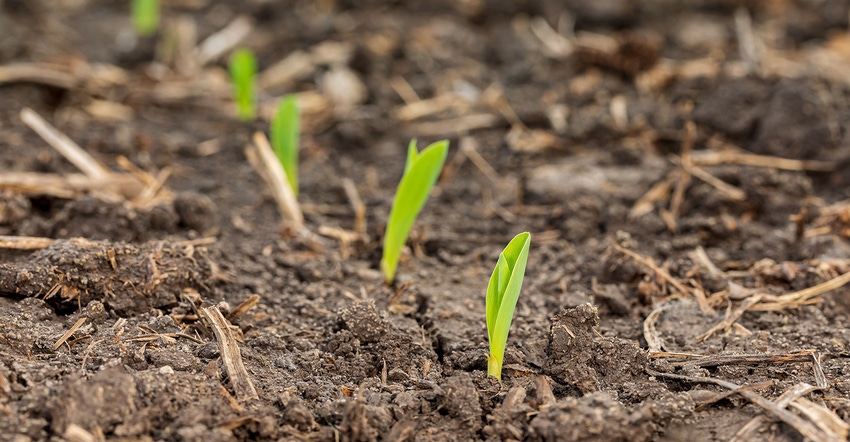
The short-term forecast continues to show abundant rainfall through Central parts of Brazil’s crop belt. Large portions of Parana, Mato Grosso do Sul and Sao Paulo will receive up to four inches of rain in the next 10 days.
While growers welcome the added precipitation to initiate the planting season, it will also keep farmers out of the field. Rainfall in both Mato Grosso to the North and Rio Grande do Sul to the South is much more moderate, with areas in those respective states receiving one to three inches of rain, but not quite as widespread. This weather pattern continues to signal a quick and expeditious start to the planting season.
We continue to monitor the potential impact by La Nina, especially in Southern Brazil. The latest models show chances at 82% in the last quarter of 2022 and then dropping as low as 60% out into February of 2023.
This is bad news, especially for Southern Brazil and Argentina which saw a large portion of their crop damaged by drought last season. Close to one-third of Brazil’s soybean crop could be exposed to the pending La Nina assuming it is similar to last season. States most at risk are Parana, Rio Grande do Sul and Santa Catarina.
Corn off to a slow start
There are already reports of Brazilian farmers finishing up planting on the first crop of corn – just in time for replanting.
A cold weather front and even some frost are nipping away at yield potential in parts of Parana, concerning farmers. Below average temperatures are slowing germination. We don’t think it is anything that can reduce total yield prospects yet, as there is still time for farmers to replant if they have to.
Farmers have forward sold almost nothing of their new crop that is being planted. Part of that is because they may have to deliver on contracts from last year that they were unable to fulfill due to drought. But they are also aware that meteorologists are calling for another La Niña and are optimistic that prices will stay firm despite a larger crop.
Corn exports continue to run hot and ending stocks will remain low. Corn exports have surpassed 22 MMT so far this year, reaching 60% of the 37 MMT estimate set by CONAB. It is likely that Brazil corn exports will be closer to 40 MMT.
Both Brazil and Argentinian corn are still the cheapest on the planet. U.S. FOB corn prices are at $320/ton right now compared to Argentina at $280 and Brazil FOB at $288. Brazil will command the global corn export market for a couple more months until the US harvest gets far enough along.
Soybean acreage expands
Soybean planting is picking up speed and early indications show that Brazil will maximize their soybean production area, likely reaching 106 million acres. Parana has already surpassed 10% planted area and Mato Grosso is close to 5%. Mato Grosso could reach 10% complete by this weekend. This would put Brazil’s soybean planting slightly ahead of average, however it is still early.
The soybean market is siphoning off acres from other crops like rice, edible beans, and even sugarcane. This is all in addition to any pasture conversion or land clearing.
Argentina’s Bolsa de Cereales released their recent estimate that corn area will be reduced by 500,000 acres to just over 18.5 million acres. Argentinian farmers are skeptical, believing the corn acre reduction to be much greater, as planting progress is well behind the five-year average due to dry weather.
As the cost to plant corn is higher, farmers will opt for less risk by planting soybeans. Over half of Argentina’s growing area is still in drought waiting for the rainy season to kick in gear.
Argentina’s exchange incentive
It is estimated that over 7 MMT (over 250 million bushels) of soybeans were sold last week alone in Argentina as a result of the new policy where farmers received 200 pesos/dollar, roughly 43% higher than the official exchange rate.
Having traveled in Argentina, the “official” exchange rate posted by the government means very little. The demand for U.S. dollars on the street is so high, the taxi driver will pay you a much better exchange rate. Locals are wanting to convert their assets to a currency whose buying power will not erode away quickly.
Inflation in Argentina has already reached 70% this year and could go higher. We believe that Argentina’s new policy of paying a higher exchange rate may become common practice in order to get farmers to part with their grain.
Matthew Kruse is President of Commstock Investments. Subscribe to their report at www.commstock.com.
Futures trading involves risk. The risk of loss in trading futures and/or options is substantial and each investor and/or trader must consider whether this is a suitable investment. Past performance is not indicative of future results. Trading advice is based on information taken from trades and statistical services and other sources that CommStock Investments believes to be reliable. We do not guarantee that such information is accurate or complete and it should not be relied upon as such. Trading advice reflects our good faith judgment at a specific time and is subject to change without notice. There is no guarantee that the advice we give will result in profitable trades.
The opinions of the author are not necessarily those of Farm Futures or Farm Progress.
About the Author(s)
You May Also Like






